Top 5 Alternatives to Raspberry Pi Pico
After the launch of Raspberry Pi Pico in January 2021, which was powered by the Raspberry Pi’s inhouse silicon tapeout RP2040 microcontroller - later captured the market with its increased functionalities for a wide range of applications. Raspberry Pi’s first microcontroller manufactured on a modern 40nm process technology delivers high performance, low power consumption, and low leakage - featuring the dual-core Arm Cortex-M0+ processor clocked at a frequency of 133MHz. With large on-chip memory of 264kB SRAM in six independent memory banks and support for 16MB of off-chip flash memory via QSPI bus provides a unique experience without compromising the performance.
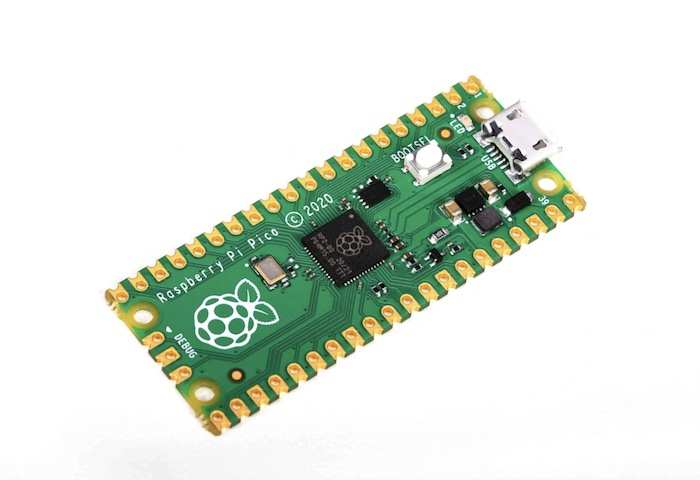
This article focuses on the alternatives for the $4 Raspberry Pi Pico microcontroller board. The boards that are featured provide additional functionality leveraging the RP2040 and come at a very low cost. Thanks to Raspberry Pi Foundation, who later in 2021 announced the sale for RP2040 microcontroller, enabling several manufacturers to design their boards with more features. Some of the known manufacturers are Adafruit, SparkFun, and Seeed Studio; not to miss, the Arduino, rival with RPi Foundation, also decided to introduce Arduino Nano RP2040 connect board integrating RPi RP2040 microcontroller.
Arduino Nano RP2040 Connect
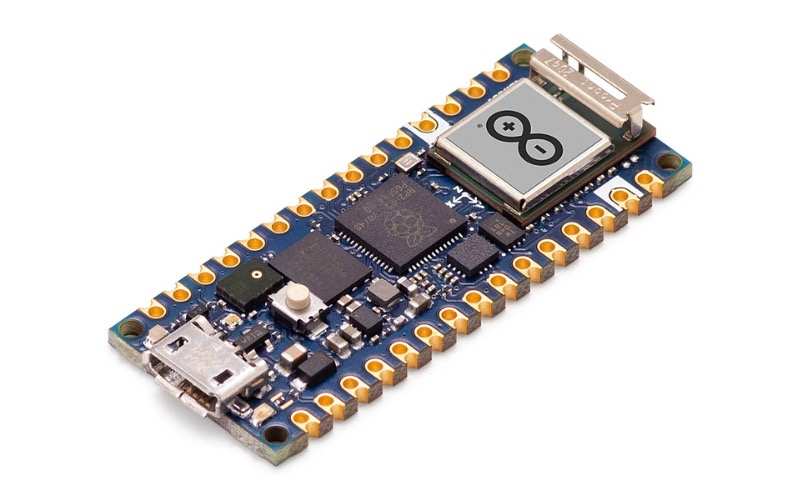
Surprisingly, Arduino designed a board integrating RP2040 microcontroller in their existing Arduino Nano form factor giving it a minimalistic design with upgraded features. At the heart of the board is the RP2040 along with the u-blox NINA-W102 radio module for providing enough functionality for a wide range of IoT applications. Supporting Arduino Cloud enables the developers to explore the enhanced capabilities through the cloud. It also comes with onboard built-in sensors, including a mic for audio control and AI voice recognition, along with the six-axis IMU sensor.
Specifications of Arduino Nano RP2040 Connect
- Type: Nano RP2040 Connect
- Microcontroller: Raspberry Pi RP2040
- Wireless connectivity: u-blox NINA-W102 radio module supporting Wi-Fi 802.11b/g/n and Bluetooth Low Energy 4.2 connectivity
- USB Connector: Micro USB
- On-board sensors: IMU LSM6DSOXTR with always-on 3D accelerometer and 3D gyroscope
- Communication: UART, SPI, I2C
- Power supply: 5V through Vin
- Dimensions: 18x45 mm
- Weight: 6gm
Adafruit Feather RP2040
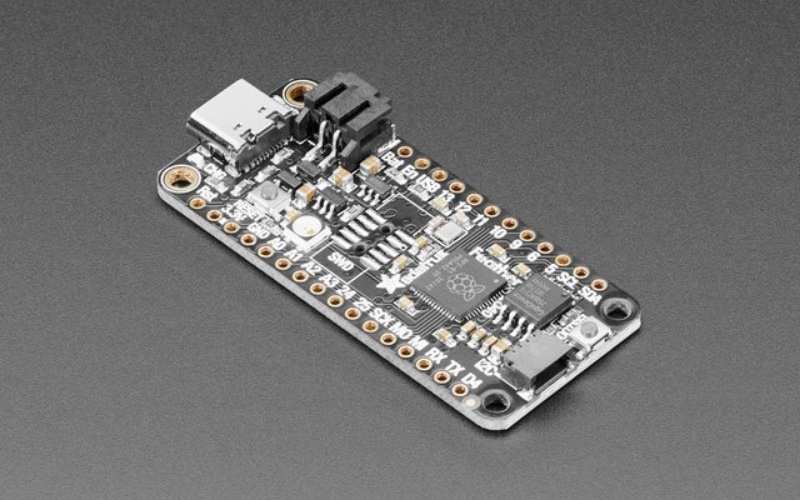
One of the popular electronic manufacturers in the hacker community, Adafruit, released the RP2040-based Feather board. As the name suggests, the hardware comes in the form factor of their existing feather board line-up. Even though the product is priced three times more than the Raspberry Pi Pico, Adafruit has provided you with more functionality, including the built-in 200mA and LiPoly charger with charging status indicator LED. The board also gets a famous on-board STEMMA QT connector allowing the user to quickly connect any Qwiic, STEMMA QT, or Grove I2C devices without the need for soldering.
Specifications of Adafruit Feather RP2040
- Microcontroller: RP2040
- Memory: 264kB RAM
- Flash storage: 8MB SPI flash chip for storing files
- Peripherals: 2x UART, 2x SPI, 2x I2C, 16x PWM, USB 1.1 controller and PHY, 8x PIO state machines
- Battery support: Built-in 200mA and LiPoly charger
- LED: Pin13 RED LED and RBG NeoPixel
- Connector: Qwiic, STEMMA QT connector and Grove I2C devices
- USB: USB Type-C connector that allows access to ROM USB bootloader and serial port debugging.
- Dimensions: 50.8x22.8x7 mm
SparkFun RP2040 Thing Plus
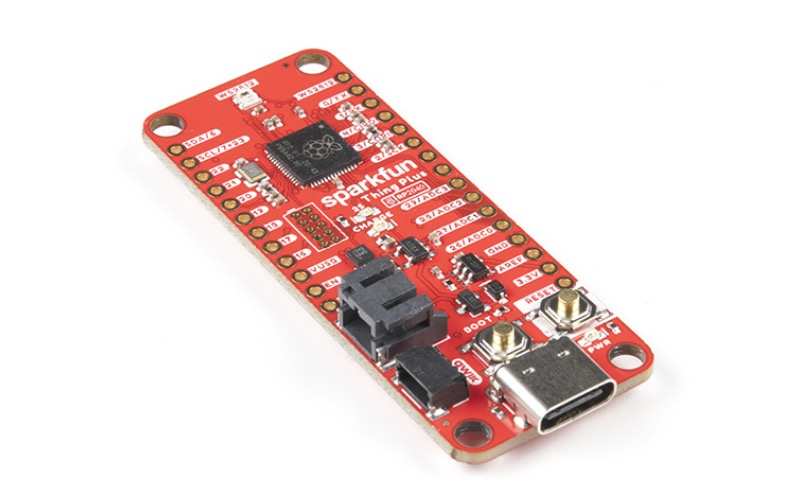
This low-cost, high-performance board from Sparkfun with integrated RP2040 microcontroller comes in the Thing Plus (and Feather) form factor with flexible digital interfaces. The board features an SD card slot for upgrading flash memory and comes with a JST single-cell battery connector with a charging circuit. The Qwiic connector helps the user interfacing a wide range of sensors from a distance, imaging, environmental to GPS. The onboard USB Type-C connector provides USB1.1 host/device functionality and can be used to power the board.
Specifications of SparkFun RP2040 Thing Plus
- Type: Thing Plus RP2040
- Form factor: Thing Plus or Feather:
- Flash memory: 16MB QSPI flash memory
- USB: USB Type-C connector
- Battery support: 2-pin JST connector for LiPo battery with 500mA charging circuit
- External device connection: Qwiic connector
- Buttons: Boot and RESET
- LEDs: Power, Charging, test LED and addressable RBG LED
- Dimensions: 2.3" x 0.9"
Adafruit QT Py RP2040
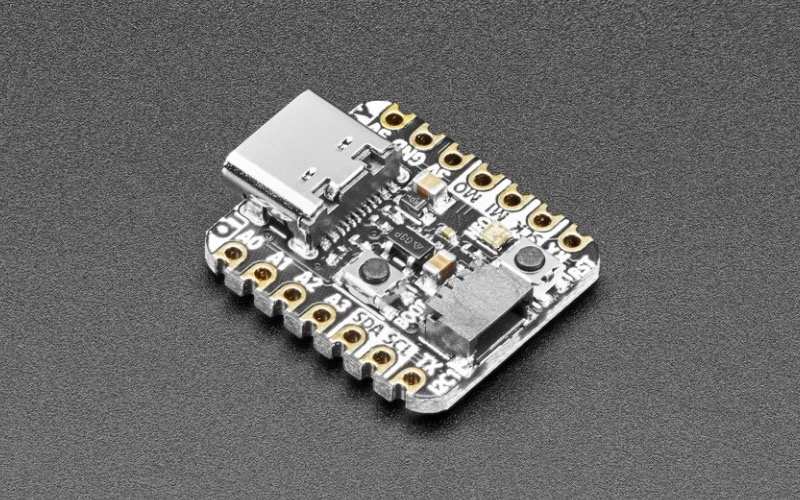
This board makes it to the list because of its unusually small footprint, making it one of the favorite boards for space constraint applications. With its plug-and-play STEMMA QT connector with the small form factor, the hardware provides capabilities to interface plenty of external sensors. The fascinating feature of easy interfacing of sensors across SparkFun Qwiic and Seeed Studio I2C devices allows greater compatibility for your existing collection of sensors. The hardware does not come with many onboard components and still manages to place an RGB NeoPixel LED and a USB Type-C connector for power.
Specifications of Adafruit QT Py RP2040
- Microcontroller: RP2040 at 125MHz
- Software support: MicroPython and CircuitPython
- LED: Built-in RBG NeoPixel LED
- Button: RESET and Bootloader
- USB Connector: USB Type C connector for powering and uploading the code
- Dimensions: 20x17.5 mm (same as Seeed XIAO)
Seeed Studio XIAO RP2040
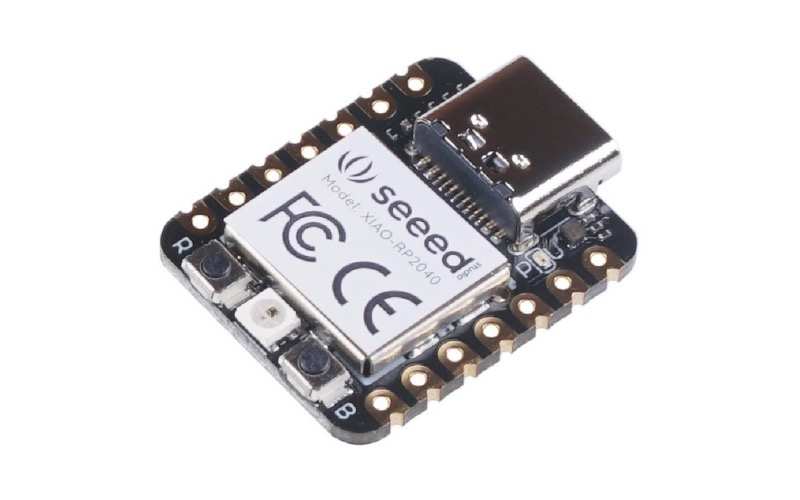
Since we have already covered Adafruit QT Py 2040, there is another RP2040-based tiny board from Seeed Studio in the existing lineup of XIAO boards. The Seeed Studio XIAO RP2040 board provides powerful performance at low-power consumption, making it a considerable choice for wearable and small IoT projects. Other than the RP2040 microcontroller, Seeed Studio provides 2MB of flash memory on board and rich interfacing capabilities.
Specifications of Seeed Studio XIAO RP2040
- Type: Seeed Studio XIAO series with RP2040
- Storage: 2MB of onboard flash memory
- Memory: 264kB of SRAM
- I/O Pins: 11x digital pins, 4x analog pins, 11x PWM pins
- Interface: 1x I2C, 1x UART, 1x SPI, 1x SWD bonding pad
- Power supply: USB Type-C interface
- LEDs: 1x user LED, 1x power LED, 2x LEDs for serial port downloading, 1x RGB LED
- Buttons: RESET and BOOT
- Software support: MicroPython, Arduino and CircuitPython
- Dimensions: 20x17.5x3.5 mm
Which one should you choose?
This really depends upon the type of application and resource constraint. Most of these boards support sensors across different manufacturers giving the user flexibility and effortless compatibility. If you are looking for a board for wearable devices, consider looking for Adafruit QT Py RP2040 or Seeed Studio XIAO RP2040, which have almost the same functionality.
Your turn: Which is your favorite board from our top 5 selection?































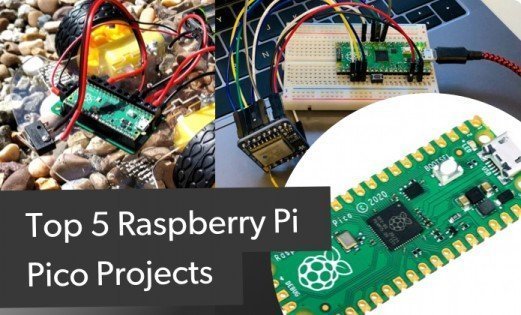








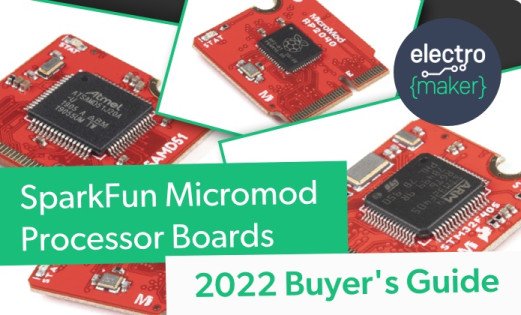



Leave your feedback...